- europages
- >
- Chemical fertilizers
- >
- JADAM
- >
- products
JADAM - Chemical raw material solution for water treatment, Detergents and Fertilizers.
Portugal
Agent/ Representative
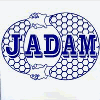
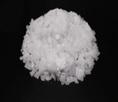
JADAM
Portugal
(Caustic Soda Flakes 98%) : Aqueous solution of sodium hypochlorite in demineralized/decalcified water, obtained from the reaction between chlorine gas and an aqueous solution of sodium hydroxide, both substances obtained with mercury-free membrane technology. Properties and applications production of hard soap, cleaning agents, exfoliating masks cleaning and disinfection in animal husbandry and bee-keeping obtaining aluminum in the steel and metallurgy industries pharmaceutical and chemical industry paper production in the pulp and paper industry refining of crude oil and mineral oils in the petrochemical industry industrial cleaning pH regulation in water treatment processes raw material in the production of pigments and dyes for paints Other chemical specifications formula NaOH CAS number1310-73-2 WE number215-185-5 Molar mass40 g/mol ADR UN1823 physical properties pH12,4 Melting / freezing point- 9°C (roztwór 7,5 %) Relative density2,12-2,13 g/cm3 (> 98,5 %)
Request for a quote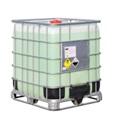
JADAM
Portugal
Hydrochloric acid 31% is a colorless transparent liquid Also known as muriatic acid or spirits of salt It is an aqueous solution of hydrogen chloride with the chemical formula HCl(aq) Physical specifications: HCl is a strong and highly corrosive acid Yellowish liquid with a distinctive pungent odor, soluble in water and dissolves in alcohols but insoluble in hydrocarbons. Stability and reactions: Stable and incompatible with metals, organic materials, alkalis, explosives, epoxies Properties and applications Boiling point / range 50°C Relative density >1123 kg/m3 @20°C food & pharmaceuticals industry chloroalkalies production processes water treatment processes for drinking water and industrial water production of industrial& household chemicals mining industry production of biofuels, oils and lubricants, in refining processes galvanising and zinc plating textile industry and tanning CAS number 7647-01-0 WE number 231-595-7 Molar mass 36,45 g/mol Customs tariff code 28061000 ADR UN1789
Request for a quote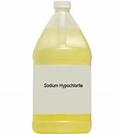
JADAM
Portugal
Sodium Hypochlorite 12% Aqueous solution of sodium hypochlorite in demineralized/decalcified water, obtained from the reaction between chlorine gas and an aqueous solution of sodium hydroxide, both substances obtained with mercury-free membrane technology. Physical specifications: Green liquid with pH about 11, solved in water with boiling point of 40° C. Stability and reactions: Slowly dissolved in the air, incompatible with hydrochloric acid, ammonia, urea, metals and methanol. Handling and storage: Keep away from sun shine, acids, heat, flammable materials and organic material. Keep in a dry place. CAS number 7681-52-9 WE number,231-668-3 Chemical formula NaOCl Molar mass 74,44 g/mol Customs tariff code,28289000
Request for a quote
JADAM
Portugal
Phosphate rock is a crucial raw material used in the production of fertilizers It occurs in two primary geological forms: sedimentary and igneous Phosphate Rock Composition: Phosphorus (P) is the primary nutrient in phosphate rock and is crucial for plant growth and development It is typically reported as phosphorus pentoxide (P2O5) The phosphorus content in phosphate rock can range from 25% to 31% equivalent to 62-67.5 BPL% Calcium (Ca) is another essential element found in rock phosphate It plays a vital role in plant cell structure, root development, and nutrient uptake, it can range from 30% to 50% Carbonates (CO3) are common impurities found in phosphate rock, typically exist in the form of calcium carbonate (CaCO3) or magnesium carbonate (MgCO3) Silicates (SiO2) are another impurity often present in phosphate rock They can have positive effects on soil structure, water-holding capacity, and nutrient retention, it can range from a few percent to over 20% CAS Number: 1306-05-4
Request for a quote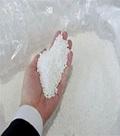
JADAM
Portugal
Urea is an organic compound with chemical formula CO(NH2)2 Urea serves an important role in the metabolism of nitrogen-containing compounds by animals and is the main nitrogen-containing substance in the urine of mammals Applications: Agriculture Urea is used as a nitrogen-release fertilizer it has the highest nitrogen content (46% N) of all solid nitrogenous fertilizers in common use Urea is a raw material for the manufacture of urea-formaldehyde resins, used mainly in wood-based panels such as particleboard Explosives Urea can be used to make urea nitrate, a high explosive that is used industrially and as part of some improvised explosive devices Automobile systems Urea is used to reduce the NOx pollutants in exhaust gases from combustion from diesel, dual fuel, and lean-burn natural gas engines properties: Molar mass 60.06 g/mol Density,1.32 g/cm3 Melting point 133-135 °C Solubility in water 545 g/L @25°C / pH 9,2 - 9,5 CAS number,57-13-6 WE number,200-315-5 Customs tariff code 3102
Request for a quote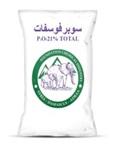
JADAM
Portugal
Chemical composition: PHOSPHOROUS PENTOXIDE (P2O5) Triple super phosphate 46% w/w Double super phosphate 36% w/w Single super phosphate 21% w/w Chemical formula Ca(PO4H2)2 Features and advantages: Granular fertilizer slow soluble in water, used in primary soil fertilization as a source of phosphorous Helps seed germination and seedling growth Helps stimulate flower buds and improve knots It helps to form sugars and proteins in plants It helps in the growth of the root and vegetative complex of plants. Usage rates: Between 20 - 70 kg per dunum depending on the crop type and the fertilizing stage CAS No. 65996-95-4 HS Code : 31031010 / 31031900 / 31031000
Request for a quote
JADAM
Portugal
Sulphur (S) 99% Granular-Lump-Powder It improves soil properties and reclaims alkaline lands due to its acidic nature It helps to eliminate some of the pests that live in the soil It provides a suitable medium for the absorb It is included in the composition of volatile oils, as in onions and garlic. Ion of some elements such as phosphorous, iron, zinc, manganese and copper by the roots due to the sulfur-causing alkalinity of athe soil. It helps in the formation of chlorophyll in plants. It is used to combat some diseases such as scabies on apples, almonds, and powdery mildew in crops Use: It is involved in the manufacture of more than 360 medicals, agricultural and industrial products Sulphur lump are used in the manufacture of sulfuric acid, sulphonic acid and nitric acid Specifications: Purity,wt%Min 99% Color Bright Yellow Inorganic Ash, wt% Max 0.05 Carbon, wt% Max 0.03 Acidity as H2SO4, wt% Max 0.003 Moisture Max 0.1 Packing,1250kg Jumpo Bags CAS No. 7704-34-09 HS code: 25030090
Request for a quote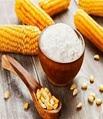
JADAM
Portugal
Starch also known as amylum, is an important food product and biomaterial used world-wide for different purposes Starch is a tasteless, fluffy white powder that is insoluble in cold water, alcohol Starch is a polysaccharide made up of 1,4 linkages between glucose monomers The chemical formula of the starch molecule is (C6H10O5)n Uses: Food Industry Adhesives (hot-melt glues, stamps, bookbinding, envelopes labels, wood adhesives, laminations, automotive) Paper Industry (paper sacks, paper coating, disposable diapers, feminine products) Construction Industry (concrete block binder asbestos, clay/limestone binder, fire-resistant wallboard, gypsum board binder, paint filler) Textiles Industry (warp sizing, fabric finishing) printing Cosmetic and Pharmaceutical Industry Mining Industry oil well drilling muds biodegradable plastic film leather finishing CAS Number 9005-25-8 Molar mass Variable Density Variable
Request for a quote
JADAM
Portugal
Calcium chloride is hygroscopic, deliquescent, and dissolves in water exothermically It is an odorless white powder highly water-soluble It absorbs enough water to turn into liquid it dissolves in water in a very exothermic manner with the release of a large amount of heat Uses: It is used to prevent ice formation and therefore used in deicing. Used in the production of activated charcoal Used as a sterilant for male animals It is used in heating pads and self-heating cans. It is used to correct the mineral deficiencies in brewing beer Calcium chloride is used as an electrolyte in sports drinks In laboratories, the drying tubes are usually packed with calcium chloride. proprieties: CAS number 10043-52-4 WE number 233-140-8 Chemical formula CaCl2 Molar mass110, 99 g/mol Density: 2.15 g/cm3 Boiling Point 1,935 °C Melting Point 772 °C Customs tariff code 28272000
Request for a quote
JADAM
Portugal
Sodium chloride commonly known as table salt, is an ionic compound with the chemical formula NaCl It forms as isometric crystals and is typically colorless or white, but may also be other colors depending on the amount and type of impurities contained within it The salt occurs in beds of sedimentary evaporate minerals. This is caused by large lakes and seas drying up. The salt beds can be hundreds of meters deep Industries: Household chemicals , Pharmaceutical industry , Food industry, Feed industry Agriculture, Paper industry, Water softening, Soda ash industry properties: CAS number: 7647-14-5 WE number: 231-598-3 Chemical formula: NaCl Molar mass: 58,44 g/mol Customs tariff code: 25010099 Names: Rock Salt Sodium Chloride Halite Form: White or Colorless crystals pH: 8-9 Melting / freezing point: 801°C Solubility in water: 358 g/l @20°C
Request for a quoteAgent/ Representative
Lisbon Estrada de Alfragide Lote 107 Ed. A2
2610-008 Lisbon - Portugal